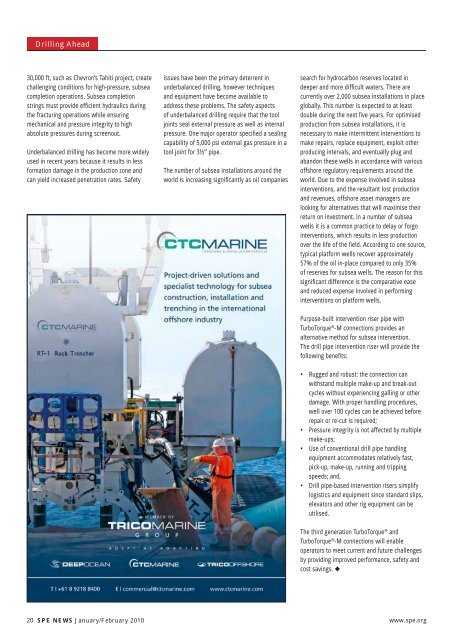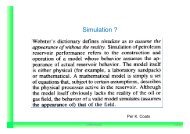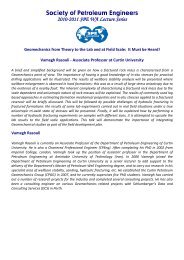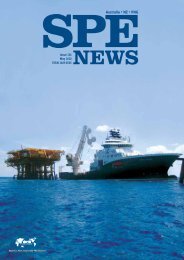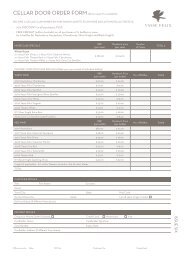Download Issue 131 - January/February 2010 - SPE WA
Download Issue 131 - January/February 2010 - SPE WA
Download Issue 131 - January/February 2010 - SPE WA
- No tags were found...
You also want an ePaper? Increase the reach of your titles
YUMPU automatically turns print PDFs into web optimized ePapers that Google loves.
Drilling Ahead30,000 ft, such as Chevron’s Tahiti project, createchallenging conditions for high-pressure, subseacompletion operations. Subsea completionstrings must provide effi cient hydraulics duringthe fracturing operations while ensuringmechanical and pressure integrity to highabsolute pressures during screenout.Underbalanced drilling has become more widelyused in recent years because it results in lessformation damage in the production zone andcan yield increased penetration rates. Safetyissues have been the primary deterrent inunderbalanced drilling, however techniquesand equipment have become available toaddress these problems. The safety aspectsof underbalanced drilling require that the tooljoints seal external pressure as well as internalpressure. One major operator specifi ed a sealingcapability of 5,000 psi external gas pressure in atool joint for 3½” pipe.The number of subsea installations around theworld is increasing signifi cantly as oil companiessearch for hydrocarbon reserves located indeeper and more diffi cult waters. There arecurrently over 2,000 subsea installations in placeglobally. This number is expected to at leastdouble during the next fi ve years. For optimisedproduction from subsea installations, it isnecessary to make intermittent interventions tomake repairs, replace equipment, exploit otherproducing intervals, and eventually plug andabandon these wells in accordance with variousoffshore regulatory requirements around theworld. Due to the expense involved in subseainterventions, and the resultant lost productionand revenues, offshore asset managers arelooking for alternatives that will maximise theirreturn on investment. In a number of subseawells it is a common practice to delay or forgointerventions, which results in less productionover the life of the fi eld. According to one source,typical platform wells recover approximately57% of the oil in-place compared to only 35%of reserves for subsea wells. The reason for thissignifi cant difference is the comparative easeand reduced expense involved in performinginterventions on platform wells.Purpose-built intervention riser pipe withTurboTorque ® -M connections provides analternative method for subsea intervention.The drill pipe intervention riser will provide thefollowing benefi ts:• Rugged and robust: the connection canwithstand multiple make-up and break-outcycles without experiencing galling or otherdamage. With proper handling procedures,well over 100 cycles can be achieved beforerepair or re-cut is required;• Pressure integrity is not affected by multiplemake-ups;• Use of conventional drill pipe handlingequipment accommodates relatively fast,pick-up, make-up, running and trippingspeeds; and,• Drill pipe-based intervention risers simplifylogistics and equipment since standard slips,elevators and other rig equipment can beutilised.The third generation TurboTorque ® andTurboTorque ® -M connections will enableoperators to meet current and future challengesby providing improved performance, safety andcost savings. ◆20 <strong>SPE</strong> NEWS <strong>January</strong>/<strong>February</strong> <strong>2010</strong>www.spe.org


